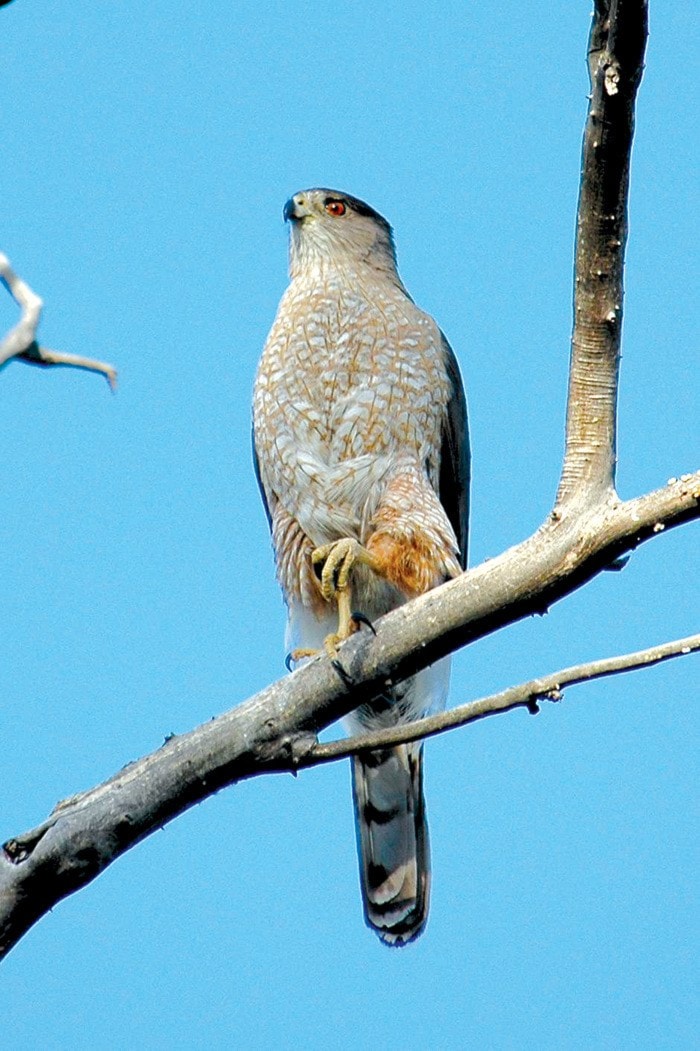Each spring and fall, at hundreds of sites across North America, volunteers participate in hawk watches. Despite the name, it is not only hawks that are observed, but all day-time raptors, including hawks, eagles, falcons, vultures, kites and osprey. It has been known for some time that in particular locations certain features of geography result in concentrations of migrating raptors. Most raptors are well equipped for gliding, which is most efficient on rising air currents. The geography creates such currents and the raptors are able to read the landscape and chose the most efficient routes. Many of these sites are situated where the prevailing winds encounter a mountain ridge which forces the air upward. In places where such geography is scarce, the raptors will alter course to ensure making full use of those that are available, thus concentrating them in these locations. Unfortunately, in B.C., there are many such ridges, and this concentration effect is not as pronounced. I have been unable to locate any raptor concentrations around Nakusp.
Near Castlegar, however, the terrain is a little more open and offers fewer options to the migrating raptors. Former Robson resident, Michael McMann has been observing raptors in and around Castlegar for several years and he located a particularly good hawk watch site near the Castlegar airport. I went down twice during September to survey the passing raptors. Hawk watching is not particularly arduous; we had chairs, binoculars, spotting scopes and, of course, lunch! We sat for a while watching for birds and then used the scope to identify them.
Unlike some migrating birds that seem to be in a hurry to get to their destination, raptors move in a fairly leisurely manner. If weather and flying conditions aren’t to their liking, then they simply stop and wait till tomorrow. If hawk watchers pick the wrong day, it can be pretty boring staring up at empty skies. But we were lucky last month and picked two pretty good days. On each occasion we began at about 10 a.m. and observed for four hours. On September 15 we counted 56 raptors of nine different species. On September 29 we had more birds, 77, but fewer species; just six. By far the most common species encountered were Sharp-shinned Hawks and Cooper’s Hawks. These two look-alike species can sometimes be hard to distinguish. We found that earlier in the day when they flew lower in the sky, identification was much easier; but later in the day, when it gets warmer, they fly at higher elevations. The extra distance between us and the bird sometimes made it impossible for us to distinguish one species from the other. Of the 77 raptors we saw on the 29th, 50 of them were Sharp-shinned or Cooper’s Hawks.
Over the two separate visits, we saw a total of 12 species. In order from most to least common, these were: Sharp-shinned Hawk, Cooper’s Hawk, Red-tailed Hawk, Turkey Vulture, Northern Goshawk, Osprey, American Kestrel, Broad-winged Hawk, Bald Eagle, Golden Eagle, Swainson’s Hawk and Merlin. The highlight was the sighting of two Broad-winged Hawks on the 15th. In eastern North America this is a common hawk, but not so in the west. I have seen this species only twice before in B.C..
